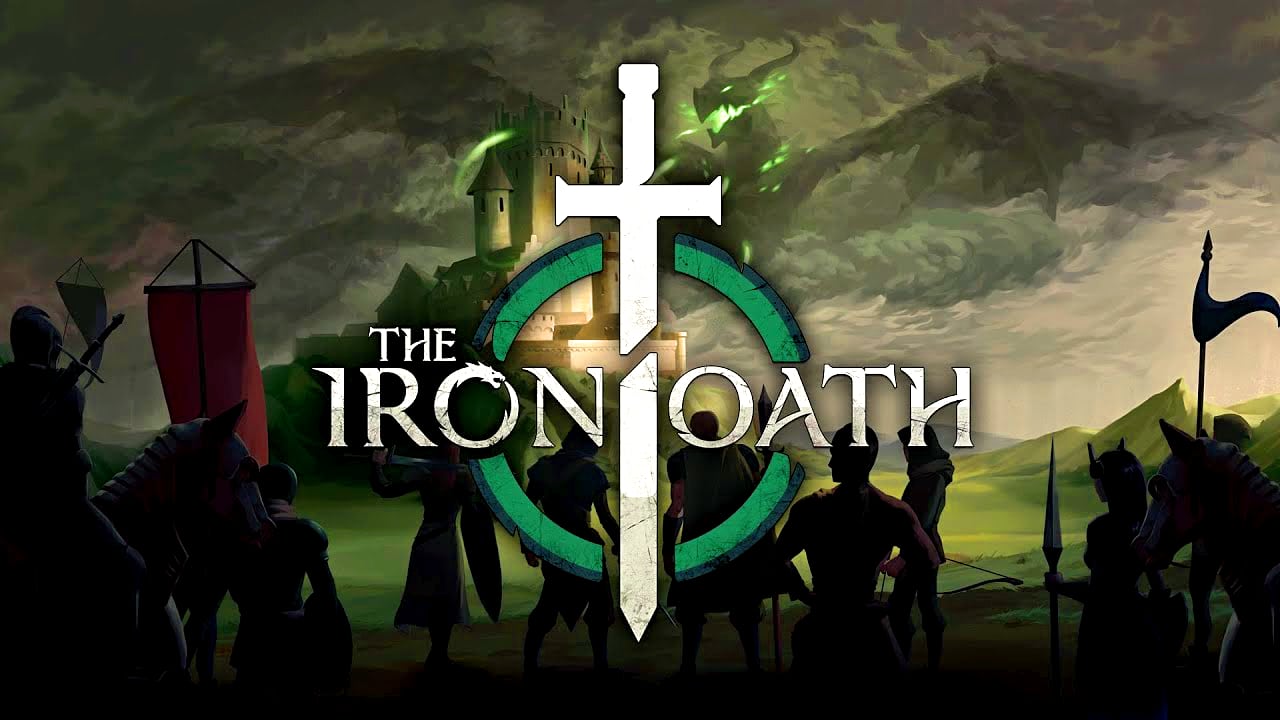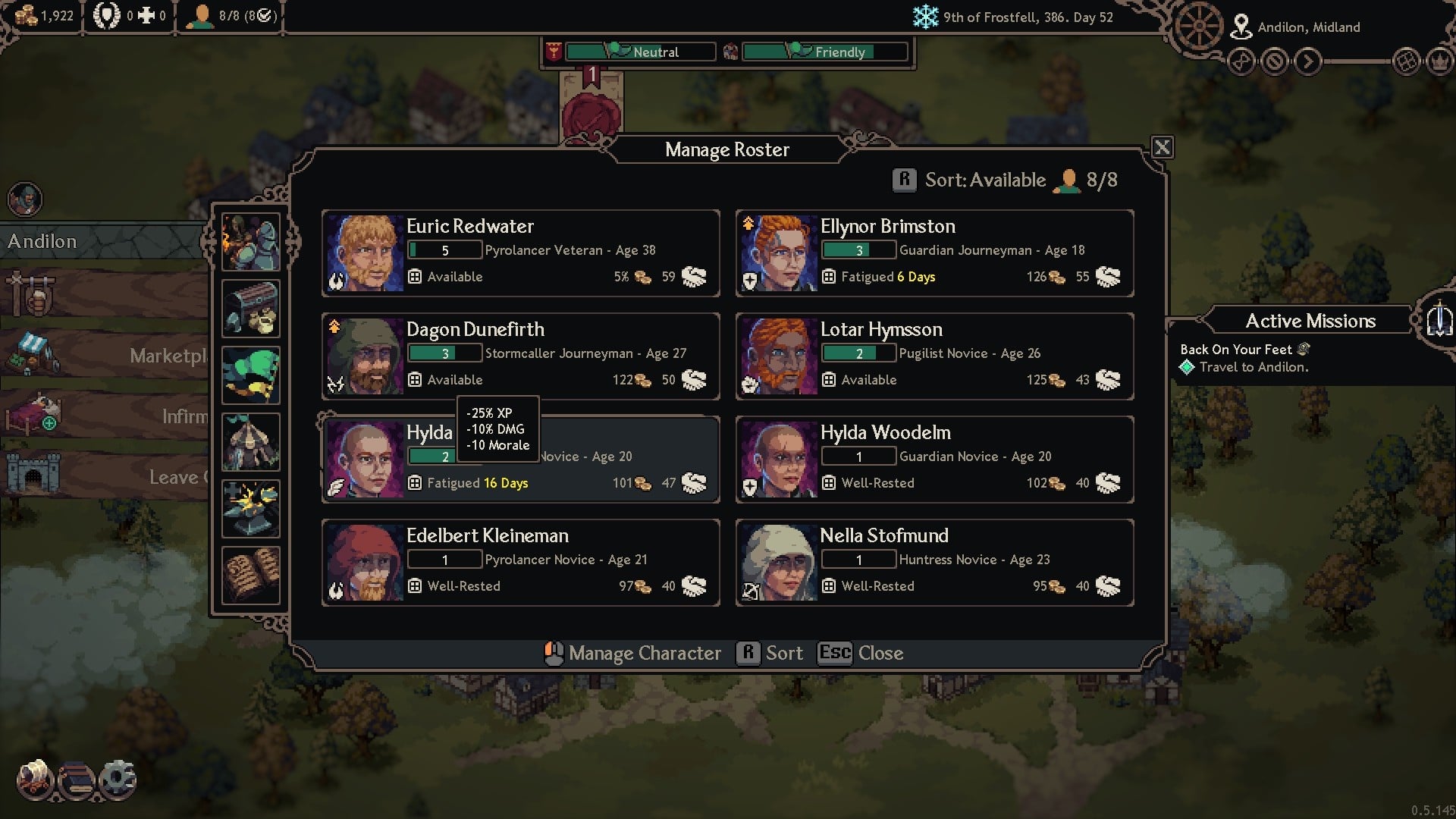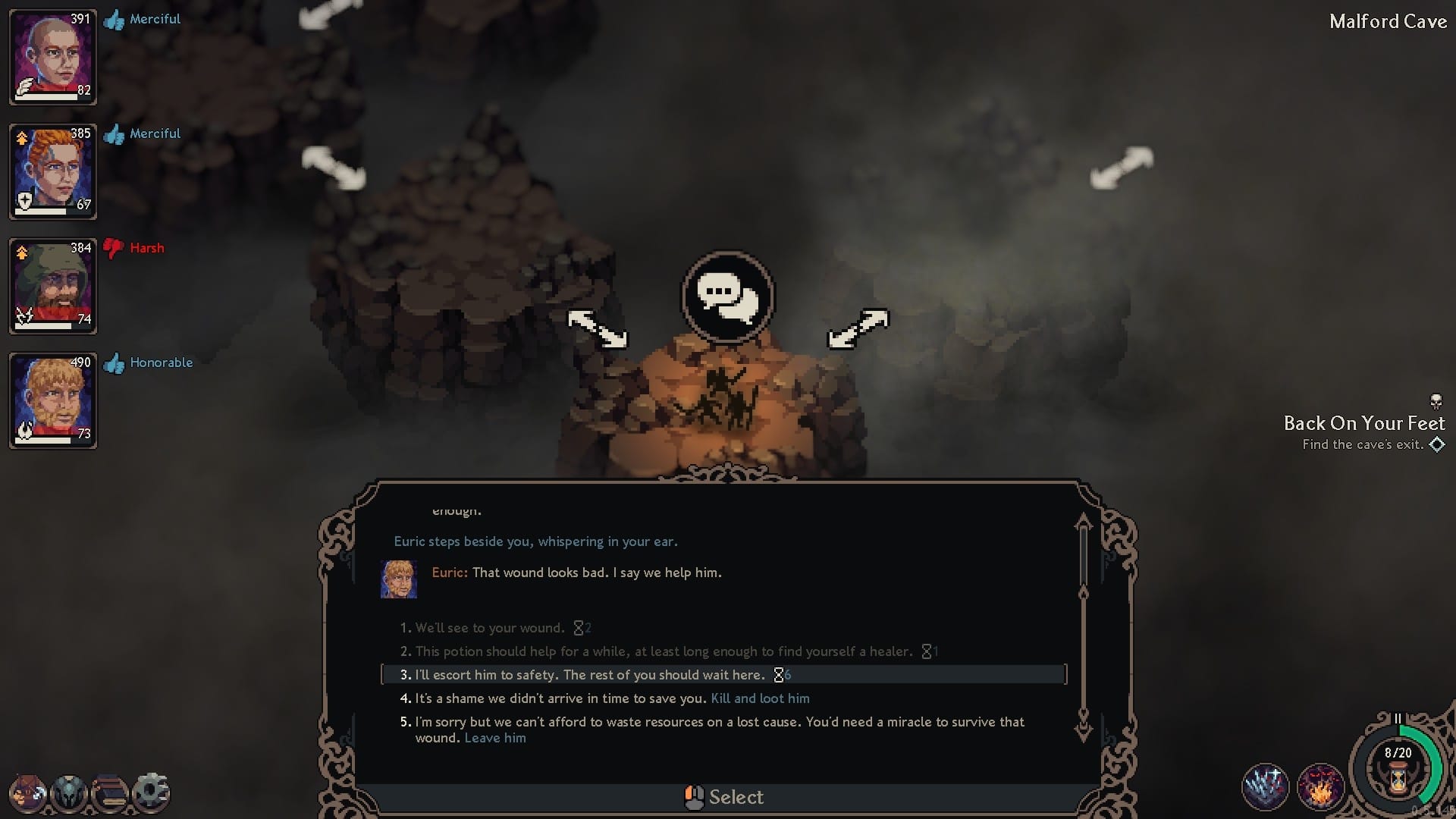The Iron Oath makes a fabulous first impression in the Early Access test. However, it doesn’t offer much for the money at the moment.
We tried out The Iron Oath in Early Access, founded a mercenary band with many strengths and weaknesses, experienced the beginning of a dark, well-written story and fought with bandits and sinister monsters.
In the game, you take on missions for noble houses, send your troops into dungeons and battlefields, loot treasures, defeat wacky critters and tend to injuries after your work is done. Doing your job well will improve your reputation and you’ll gradually receive better missions with greater challenges, gain access to various upgrades for your company and get better prices in the marketplace.
This is all presented with cool pixel art and a really awesome soundtrack, has very good text but no voice acting or any cutscenes. In addition, the game is currently only available in English. A German translation is planned for the future, but is currently still missing. In fact, the game still offers a very manageable amount of content; the story part available so far can be played through in an extended afternoon. What is available, however, already gives hope for a real genre highlight.
The story: Not original, but exciting
The Iron Oath is set in a medieval world haunted by monsters. Villages and towns are searching for mercenaries to find missing family members and smoke out monster caves. Your job is to hire these mercenaries, pay them, lead them in battle and through dungeons, and equip and medicate them.
You’re also on the hunt for a gang of traitors who play nasty tricks on you at the start of the game. None of this is terribly original, but it is very well written and excitingly told. You hire mercenaries in taverns, their class and characteristics depending on chance.
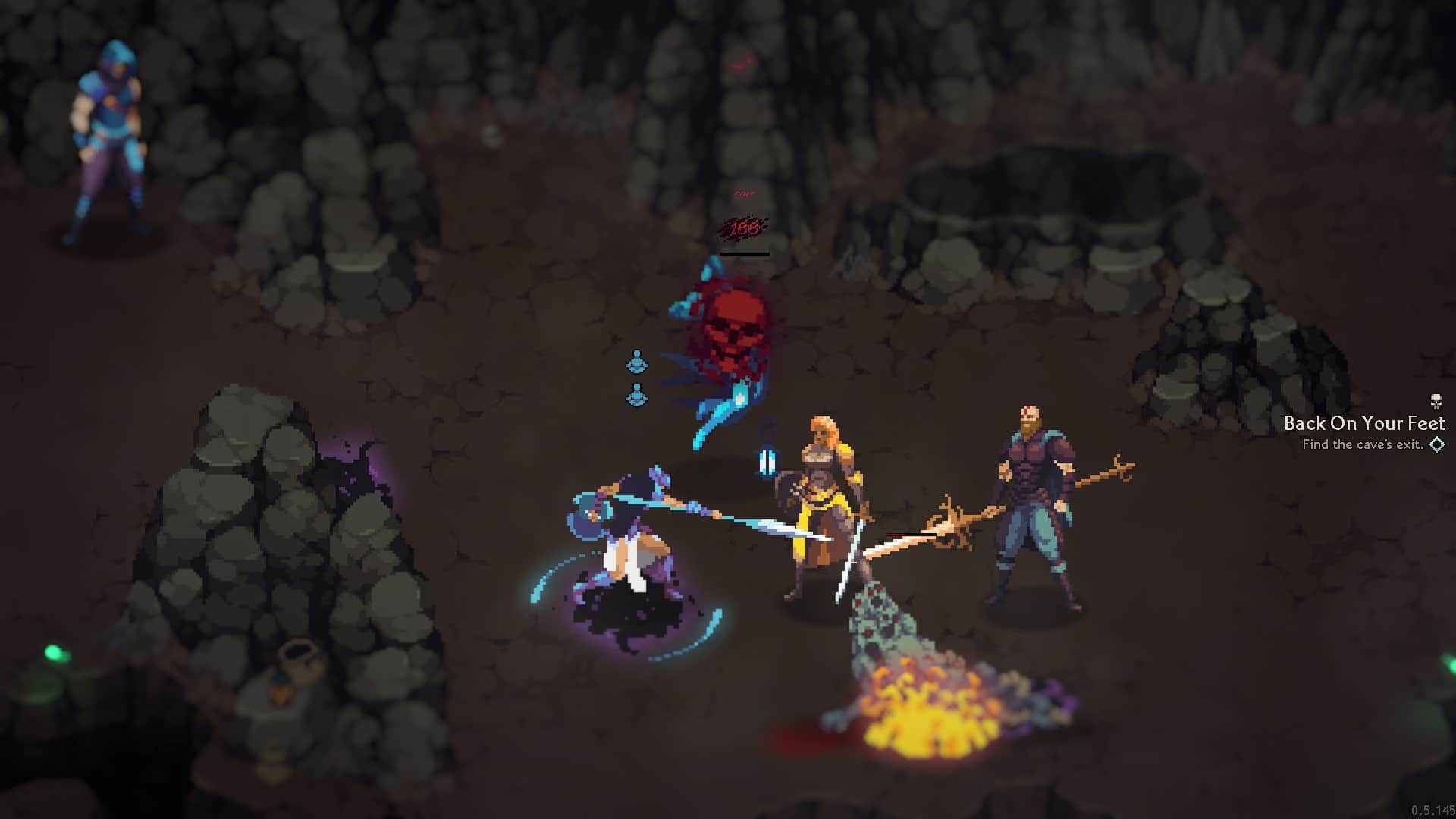
There are currently six character classes ranging from more obvious units like the lightning summoning Stormcaller and the bow armed Huntress to the brawling Pugilist and the Pyrolancer, a cross between a fire mage and a tank armed with a lance.
In addition, your warriors have positive and negative character traits. Your huntress may be deceptive and like to fib in dialogue options and decisions, a careless pugilist hits harder and takes more damage, stubborn mercenaries want to get their way in decisions and so on.
Names and appearance are also randomly generated, but unlike the class and character traits, you can freely change and adapt them manually. Initially, you can hire up to eight mercenaries if you have the financial means to do so, and you can expand your roster with upgrades. The maximum group size for dungeons and battles is limited to four characters, adventures and battles with more characters could follow later, but are not yet firmly planned.
You are allowed to change details like names and appearance of the mercenaries. Age, class and character traits, however, are not.)
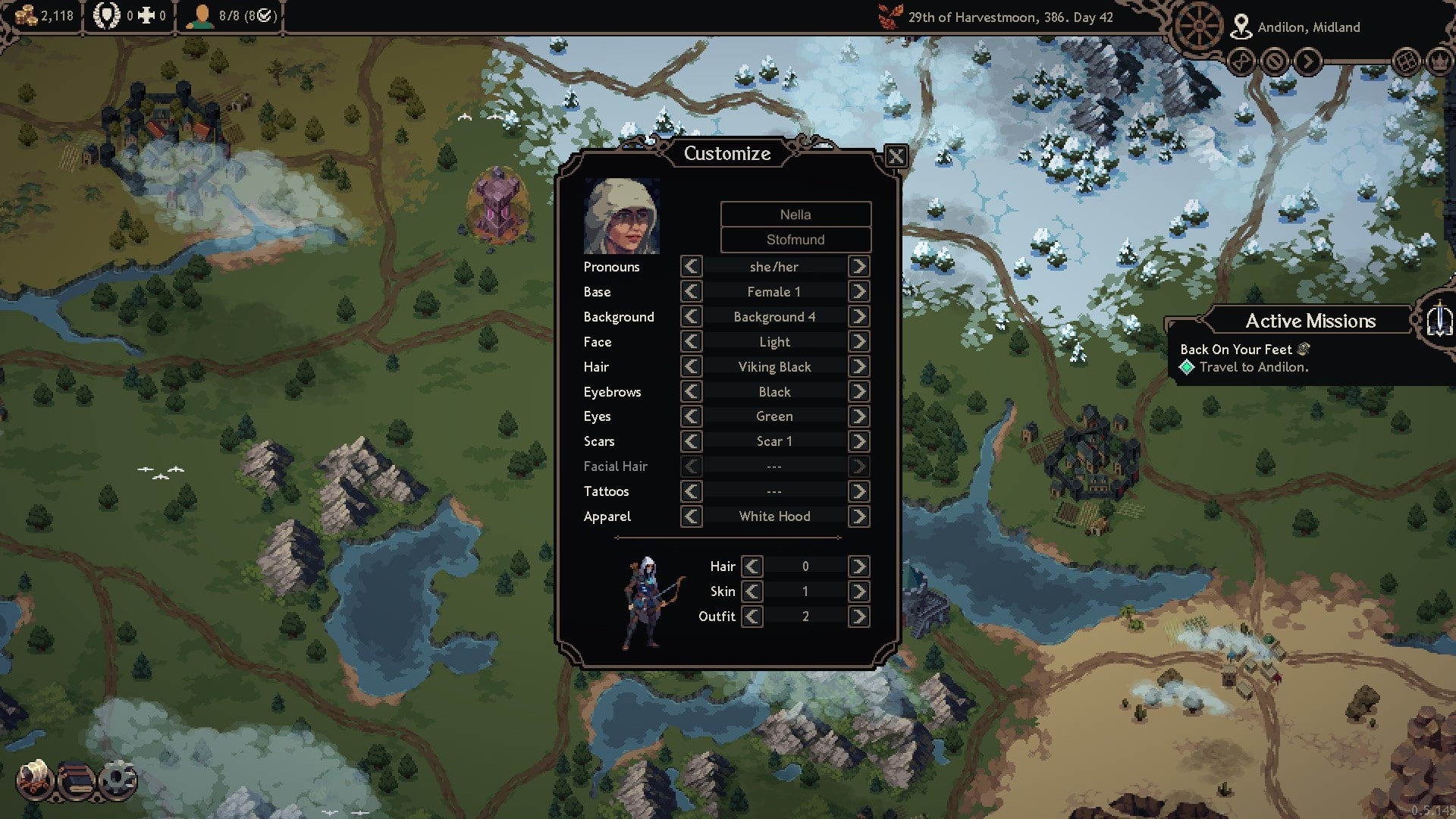
The battles: tactically shallow but fun
The battles aren’t terribly complex at this point: melee fighters surround dangerous units and try to bind them to them by dealing attacks of opportunity if an opponent tries to flee. Ranged fighters lay traps and use cover to attack from a distance and take as little damage as possible themselves. Positioning is very important, and each class has a few interesting abilities.
A Guardian can heal comrades-in-arms and equip himself and companions with shields, a Valkyrie teleports weak heroes out of harm’s way, and the Stormcaller can cast an overpowered Lightning Bolt that grills most enemies perfectly with just one hit, but takes some time to channel.
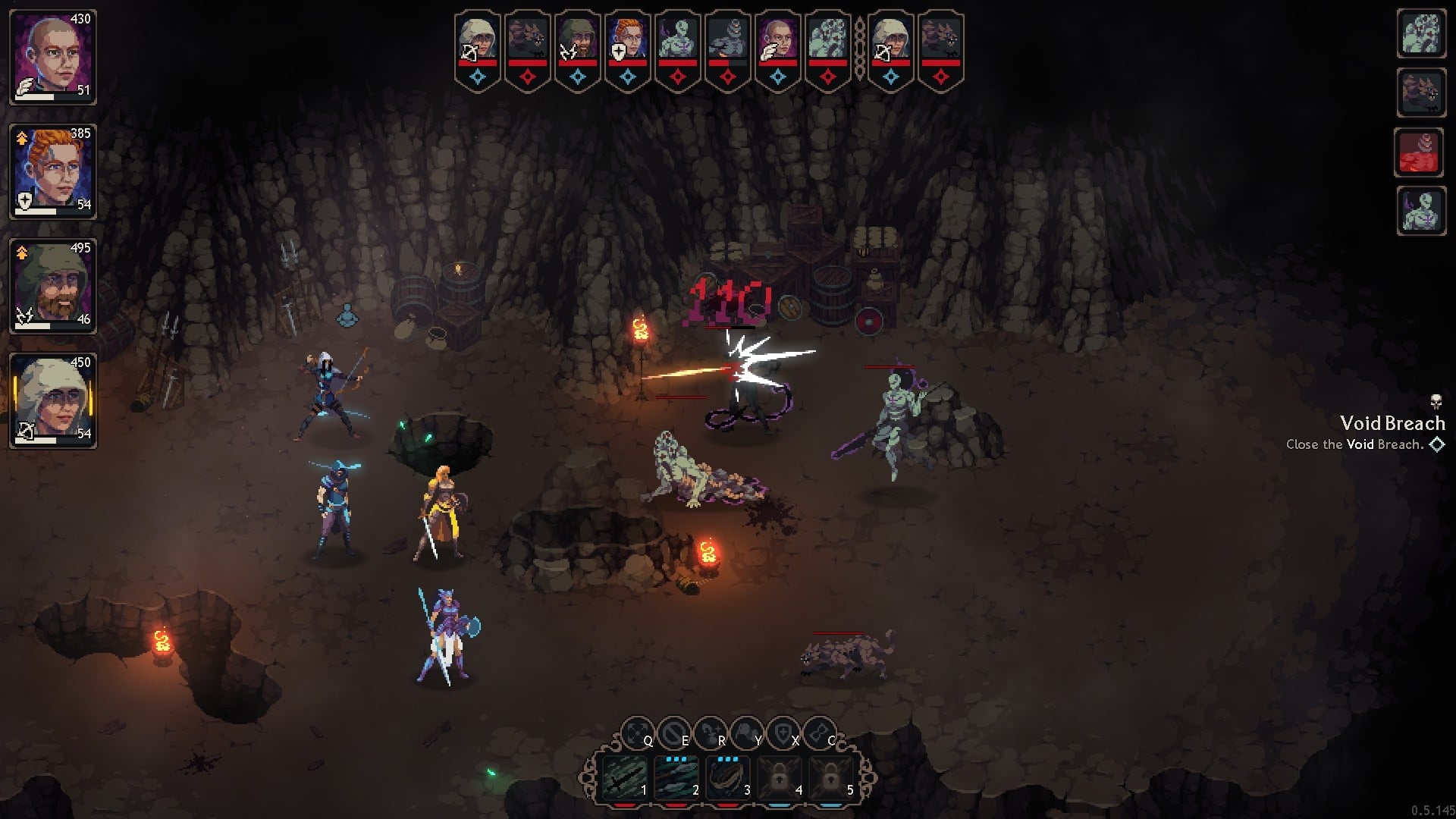
You can level up these abilities to give them more effectiveness, range or additional charges – you can only use them a limited number of times and must rest to access them again. Your adventures usually take place in dungeons, supplies are limited and a camp set up often attracts enemies.
In addition, before resting, you must choose whether you want to regenerate your skills or your health. If you run out of healing potions on the way and run into an ambush, mercenaries may permanently kick the bucket. Successful, long-lived mercenaries may not die in battle, but they will age as the game progresses, lowering attributes such as maximum life. Those who live a happy and long life eventually retire. This is nice and atmospheric, but will cost you experienced fighters.
The scope: still little campaign, but a lot of sandbox
Especially in dungeons you have to make a lot of decisions: Do you help a wounded adventurer or do you flatten him and loot his carcass? The loyalty and morale of your mercenaries will drop and rise depending on your actions. The more time you spend in a dungeon, the more negative effects you gain, such as more dangerous traps or greater risk of surprise attacks. If you dawdle, you suffer!
During the course of the game you will have to deal with death, injuries, long recovery times, age, pay and repairs, because The Iron Oath is not only a turn-based strategy game and a dungeon crawler, but also requires some management.
This is not easy, but at least the difficulty level is very flexible and customisable, from sliders for experience points in battle to regeneration times for wounds to the amount of gold you start the game with, you are allowed to adjust many details and rules to your personal taste.
At the moment, you don’t get much for the 20 euros you have to pay for Early Access. After a few hours of story, there are random sandbox tasks, and after 15 hours you’ll have seen every one of them. In the game itself, there’s a roadmap that shows you when new classes, content and features are coming.
This is nicely transparent, the announced updates seem realistic and not exaggerated. Above all, what’s already in there is really good. But if you haven’t already fallen in love with the game at first sight, you should keep an eye on it for now and wait until the next few content updates appear.
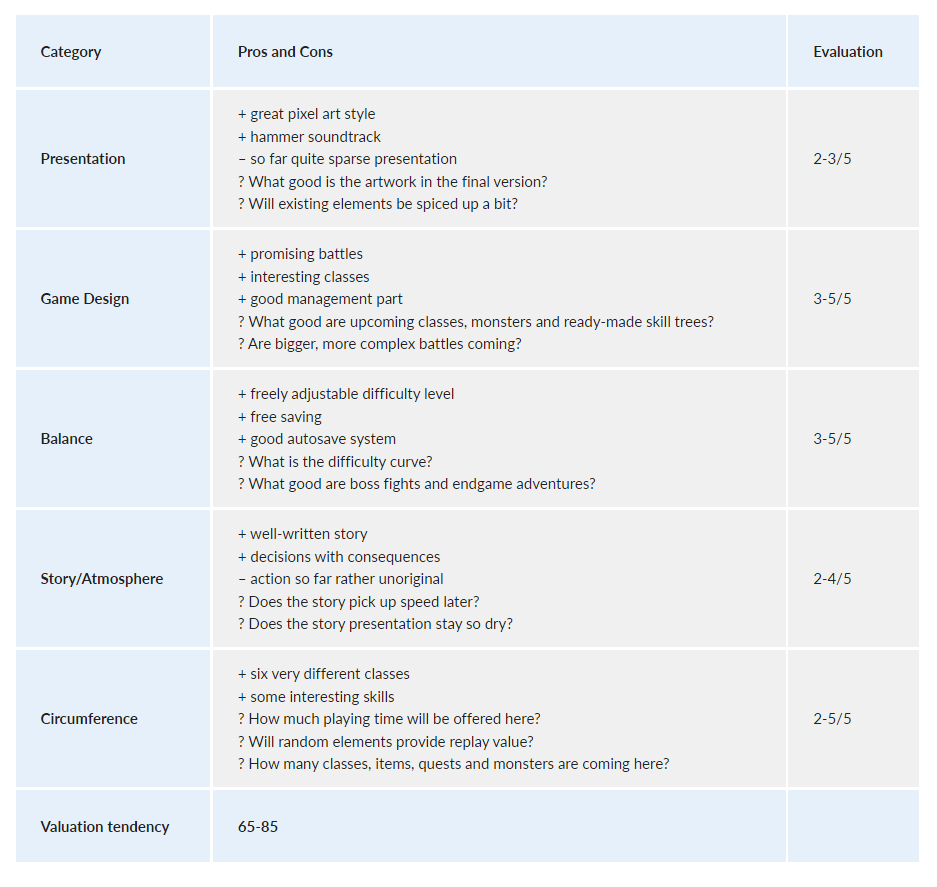
Conclusion of the editors
I think The Iron Oath is going to be really good for once, even though I’m hoping for more epic battles on bigger battlefields. Four mercenaries against a handful of monsters on a puny map is a nice appetizer for a few hours in Early Access, but in the long run I would like to have control over more units and would especially like to see battles where you are not directly on touch with the opponent from the first turn.
At the moment there’s only half a talent tree per class, the gameplay so far is great, but wears out pretty quickly. Of course, there are already hardcore fans who put in 50 or more hours, but for me the game simply offers too little. What exists so far is great, no question, but you must be really hungry for tactical role-playing games if this very early version of the game is worth 20 euros to you.

